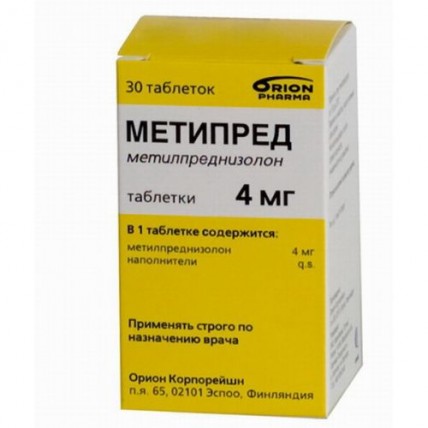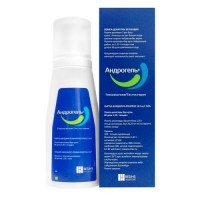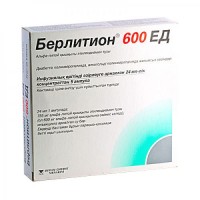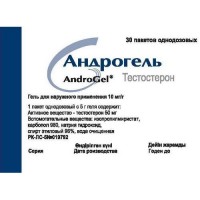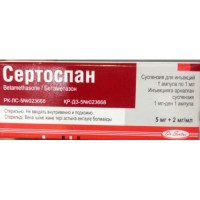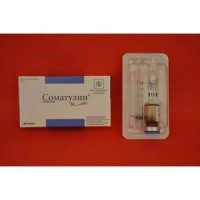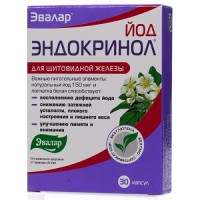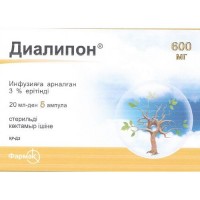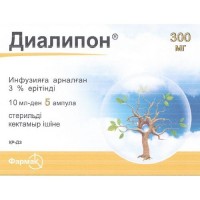Metipred 4 mg (30 tablets)
- $19.20
Out Of Stock
The instruction for medical use
of METHYPREDUM medicine
the Trade name
Methypredum
the International unlicensed
name Methylprednisolonum Dosage Form
of the Tablet, 4 mg and 16 mg
Structure
One tablet contains
active agent - Methylprednisolonum of 4 mg or 16 mg,
excipients: lactoses monohydrate, starch corn, gelatin, magnesium stearate, talc.
The description
of the Tablet of round shape, with a flat surface, with slanted edges, white or almost white color, with risky on one party, with a diameter from 6.9 to 7.3 mm (for a dosage of 4 mg).
Tablets of round shape, with a flat surface, with slanted edges, white or almost white color, with risky on one party, with an engraving of ORN and 346, located on both sides the risks with a diameter from 8.9 from 9.3 mm (for a dosage of 16 mg).
Pharmacotherapeutic group
Hormonal drugs for system use (excepting sex hormones). Corticosteroids for system use. Glucocorticosteroids. Methylprednisolonum.
The ATX H02AB04 code
the Pharmacological
Pharmacokinetics Bioavailability properties of Methylprednisolonum at intake usually makes more than 80%, but maybe is lower when assigning big the dosed
Peak of concentration in blood serum is observed in 1–2 hours, average elimination half-life – 2–3 hours.
Communication of Methylprednisolonum with proteins of plasma makes 77%, communication with transcortinum is insignificant. Distribution volume – 1-1.5 l/kg. Methylprednisolonum is metabolized to inactive metabolites. The specific CYP enzymes providing its transformation are not known. The average clearance is 6.5 ml/kg/min. Duration of anti-inflammatory effect – 18–36 hours. About 5% of drug are removed from an organism with urine.
The pharmacodynamics
Effect of Methypredum, as well as other glucocorticoids, is implemented through interaction with steroid receptors in cytoplasm. Steroidretseptorny the complex is transported in a cell kernel, connects to DNA and changes a transcription of genes for the majority of proteins. Glucocorticoids oppress synthesis of numerous proteins, various enzymes causing destruction of joints (in a pseudorheumatism) and also the cytokines playing an important role in immune and inflammatory responses. Induce synthesis of a lipokortin – key protein of neuroendocrinal interaction of glucocorticoids that leads to reduction of the inflammatory and immune response.
Glucocorticoids, including Methypredum, suppress or interfere with development of the fabric answer to many thermal, mechanical, chemical, infectious and immunological agents. Thus, glucocorticoids work symptomatic, reducing manifestations of a disease without impact on the reason. The anti-inflammatory effect of drug at least by 5 times exceeds efficiency of a hydrocortisone.
Endocrine effects of Methypredum include suppression of secretion of AKTG, inhibition of products of endogenous cortisol, at prolonged use causes a partial atrophy of bark of adrenal glands. Influences metabolism of calcium, vitamin D, carbohydrate, protein and lipidic metabolism therefore at prolonged use the increase in content of glucose in blood, reduction of density of a bone tissue, the phenomenon of a muscular atrophy and dislipidemiya can be observed. Drug also promotes increase in arterial blood pressure and modulation of behavior and mood. Methypredum has practically no mineralokortikoidny activity.
Indications
- a pseudorheumatism, including the juvenile pseudorheumatism ankylosing a spondylitis
- a system lupus erythematosus, a rheumatic disease, including an acute rheumatic carditis, a system dermatomyositis (polymiositis), a nodular periarteritis
- a bladderwort
- serious, disabling allergic conditions at which usual therapy is inefficient: bronchial asthma, contact dermatitis, atopic dermatitis, a serum disease, seasonal or persistent allergic rhinitis, reaction of hypersensitivity to medicines
- an iritis, an iridocyclitis, a back uveitis and retrobulbar neuritis
- ulcer colitis, Crohn's disease
- a sarcoidosis of lungs, an aspiration pneumonitis
- the acquired (autoimmune) hemolytic anemia, an idiopathic Werlhof's disease
- leukemia (sharp and lymphatic), a lymphosarcoma, a lymphoma, a malignant multiple myeloma
- for suppression of reaction of graft rejection
the Route of administration and doses
the Initial dose depends on a disease and degree of its weight. The oral starting dose for adults usually makes from 8 to 96 mg a day. The dose has to be reduced on reaching affirmative clinical answer. The oral maintenance dose has to be minimum, for adults usually of 4-12 mg a day once in the morning. For children lower doses are recommended. At long-term treatment there can be adequate an administration of drug in the morning once every other day.
4 mg of Methylprednisolonum are an equivalent of 5 mg of Prednisolonum, 4 mg of Triamcinolonum and 0.75 mg of dexamethasone.
Indications
the Recommended initial daily dose
the Pseudorheumatism:
- heavy degree
of 12-16 mg
- average degree
of 8-12 mg
- moderate degree
- children
of 4-8
mg 4-8 mg
the System dermatomyositis
of 48 mg
the System lupus erythematosus
of 20-100 mg
the Rheumatic attack
of 48 mg before normalization of SOE for 1 week
Allergic diseases
of 12-40 mg
Bronchial asthma
Up to 64 mg at one time or up to 100 mg in a day
Ophthalmologic diseases
of 12-40 mg
Hematologic diseases, including leukemia
of 16-100 mg
the Malignant lymphoma
of 16-100 mg
Ulcer colitis
of 16-60 mg
Crohn's disease
up to 48 mg at aggravation
Organ transplantation
up to 3.6 mg/kg/days
Pulmonary a sarcoidosis
of 32-48 mg every other day
Polimialgiya
of 64 mg
the Bladderwort
of 80-360 mg
to Children: at insufficiency of adrenal glands in 0.14 mg/kg or 4 mg/sq.m a day in 3 receptions, according to other indications — in 0.417-1.67 mg/kg or 12.5-50 mg/sq.m in three divided doses
Side effects
Development of heavy side reactions depends on the size of a dose and duration of treatment. Side reactions usually develop at long-term treatment by drug, throughout the short period the risk of their emergence is improbable.
- development and exacerbation of bacterial, viral and fungal infections, a tuberculosis recurrence, immunosuppression
- increase in total number of leukocytes at decrease in quantity of eosinophils, monocytes and lymphocytes, a thrombocytosis
- hypercoagulation, thrombosis
- oppression gipotalamo - a hypophysial and adrenal system, growth delay, a delay of sexual development at children, disturbances of a menstrual cycle, disturbance of production of sex hormones (amenorrhea), Cushing's syndrome, a hirsutism,
- increase in appetite, increase in body weight, decrease in tolerance to carbohydrates, increase in need for insulin and oral glucose-lowering drugs, a lipidemia, negative nitrogenous balance, a hypocalcemia, a hypopotassemia, a gipokaliyemichesky alkalosis, a delay of sodium and liquid in an organism
- a headache, dizziness, irritability, uneasiness, labile mood, insomnia, euphoria, a depression, tendency to a suicide, a mania, hallucinations, mental dependence, psychoses, exacerbation of schizophrenia, dementia, convulsive attacks, cognitive dysfunction (including amnesia and confusion of consciousness), increase in intracranial pressure
- increase in intraocular pressure, glaucoma, a papilledema, a cataract, thinning of a cornea and sclera, virus and fungal infectious aggravations of eyes, an exophthalmos
- a myocardial infarction, arterial hypo - or hypertensia, bradycardia, ventricular arrhythmia, an asystolia (as a result of fast administration of drug), atherosclerosis, thrombosis, a vasculitis, heart failure
- allergic reactions which include an acute anaphylaxis with a lethal outcome, change of reactions to skin tests
- nausea, vomiting, unpleasant smack in a mouth, a meteorism, an esophagitis, a gullet ulcer, gullet candidiasis, ulcer of stomach and duodenum with perforation and bleeding pancreatitis, perforation of a gall bladder, a local ileitis, ulcer colitis
- increase in activity of ALT, nuclear heating plant and alkaline phosphatase
- regeneration delay, an atrophy of skin, petechias, hematomas, striya, a teleangiectasia, acne rash, an ecchymoma, a purpura, hyper - or hypopigmentation, a poststeroidny panniculitis that is characterized by emergence of an eritematoz, hot hypodermic thickenings within 2 weeks after drug withdrawal
- Kaposi sarcoma
- osteoporosis, fractures of backbone and long bones, an aseptic osteonecrosis, a myopathy, muscle weakness, an atrophy of muscles, a rupture of sinews
- increase in risk of emergence of urolites, a leukocyturia, an erythrocyturia, without the available injury of kidneys, a nocturia
- an indisposition, a resistant hiccups at use of drug in high doses
- insufficiency of bark of adrenal glands which can lead to lethal cases in stressful situations, such as surgical interventions, an injury or an infection if the dose of Methypredum is not increased
- at sharp drug withdrawal is possible a withdrawal. Weight of symptoms depends on degree of an atrophy of adrenal glands: dizziness, headache, anorexia, nausea, abdominal cavity pain, weakness, changes of mood, lethargy, heat, myalgia, arthralgia, rhinitis, conjunctivitis, painful itching of skin, loss of weight. In more hard cases – heavy mental disturbances and increase in intracranial pressure, a steroid pseudorheumatism at patients with rheumatism, death.
Contraindications
- hypersensitivity to drug components
- tuberculosis, other acute and persistent bacterial or viral infections (without due chemotherapeutic protection)
- system fungal infections
Medicinal interactions
Anticoagulants: at combined use with glucocorticoids strengthening and reduction of effect of anticoagulants can be noted. Parenteral administration of Methypredum strictly exponentiates thrombolytic action of antagonists of vitamin K (fluindion, atsenokumarol).
Salicylates and other non-steroidal anti-inflammatory drugs: co-administration of salicylates, indometacin and other non-steroidal anti-inflammatory drugs can increase the probability of an ulceration of a mucous membrane of a stomach. Methypredum can promote reduction of level of salicylates in blood serum, increasing their renal clearance. The care at reduction of a dose of Methypredum at prolonged simultaneous use is necessary.
Hypoglycemic drugs: Methypredum can partially suppress hypoglycemic effect of oral antidiabetic means and insulin.
Inductors of microsomal enzymes of a liver: for example, barbiturates, Phenytoinum, Primidonum, carbamazepine and rifampicin increase system clearance of Methylprednisolonum, thereby reducing effects of Methylprednisolonum almost twice.
CYP3A4 inhibitors: for example, erythromycin, klaritromitsin, ketokonazol, diltiazem, an aprepitant, itrakonazol and troleandomitsin increase elimination and level of Methylprednisolonum in blood plasma that can lead to strengthening of therapeutic and side effects of Methypredum.
Estrogen: can enhance effects of Methypredum, slowing down his metabolism. It is not recommended to regulate Methypredum doses to the women accepting oral contraceptives which can promote not only increase in elimination half-life, but also development of atypical immunosuppressive effects of Methypredum.
Ftorkhinolona: simultaneous use can lead to injury of sinews.
Amphotericinum, diuretics and light depletive: Methypredum can increase removal of potassium from an organism at the patients receiving at the same time these drugs.
Immunodepressants: Methypredum possesses additive immunosuppressive action that can increase therapeutic effects or risk of development of various side reactions at reception together with other immunodepressants. Only some of these effects can be explained with pharmacokinetic interactions.
Glucocorticoids, including Methypredum improve antiemetic efficiency of other antiemetic drugs used in parallel at therapy by the anticarcinogenic drugs causing vomiting.
Glucocorticoids, including Methypredum can increase concentration of a takrolimus in plasma at their combined use, at cancellation of corticosteroids the concentration of a takrolimus in plasma increases.
Immunization: drug can reduce the immunizing efficiency of vaccines and increase risk of neurologic complications. Use of therapeutic (immunosuppressive) doses of glucocorticoids together with live virus vaccines can increase risk of developing viral diseases.
Antikholinesterazny means: use of drug and antikholinesterazny means can cause muscle weakness in patients with a myasthenia.
Others: it was reported about two serious cases of a sharp myopathy at the elderly patients receiving a docsakarium chloride and Methylprednisolonum in high doses. At long therapy the glucocorticoids can reduce effect of Somatotropinum.
Cases of emergence of a sharp myopathy at use of corticosteroids for patients who at the same time receive treatment by neuromuscular transmission blockers are described (for example, pankuronium).
At simultaneous use of Methypredum and cyclosporine, cases of developing of spasms were noted. As simultaneous administration of these drugs causes mutual slowing down of metabolism, possibly spasms and other side effects are connected with use of each of these drugs as monotherapy, at their combined use can arise more often.
The special
instructions Drug Use should be stopped gradually.
Drug has to be used with care and under medical control at patients with arterial hypertension, stagnant heart failure, mental disorders, patients with diabetes (or diabetes in the family anamnesis), pancreatitis, digestive tract diseases (a round ulcer, a local ileitis, ulcer colitis or other inflammatory diseases of an intestinal path or diverticulites with the increased risk of bleeding and perforation), patients with osteoporosis, a myasthenia, herpes of eyes, a hypothyroidism, a corticosteroid - the induced myopathy in the anamnesis, a liver and renal failure, cirrhosis, epilepsy, abscess or other piogenic infections, glaucoma, to patients with tendency to thrombophlebitis. It is also necessary to be careful when prescribing drug to patients who had a myocardial infarction recently. Glucocorticoids can complicate diagnostics of complications of digestive tract as they cause reduction of a pain syndrome and also to mask hyper parathyroidism stage of latency.
Methypredum can exponentiate ulcerogenic effect of salicylates and other non-steroidal anti-inflammatory drugs.
Patients with disturbance of blood clotting have to be under medical control. At combined use of Methypredum and anticoagulants the risk of a gastric ulceration and bleeding increases. Glucocorticoids can also reduce effect of anticoagulants. The mode of dosing of anticoagulants has to be followed surely by control of a prothrombin time, namely: international normalized index (INI).
Methypredum, as well as other glucocorticoids, can promote exacerbation of infectious diseases. There is a risk of a recurrence of tuberculosis, complications of chicken pox and the surrounding herpes.
It is not necessary to apply live vaccines to patients who accept corticosteroids for system use in high doses during the immunosuppression induction period. Therapeutic reaction to other types of vaccines can be also weakened. With care to apply within 8 weeks before vaccination, in lymphadenitis after BCZh inoculation, in immunodeficiency, including in AIDS or HIV infection.
At long therapy by Methypredum it is necessary to consider a question of prescribing of biphosphonates sick osteoporosis or with risk factors of its development. Risk factors of osteoporosis are age 65 years, frequent changes in the anamnesis or in the family anamnesis, an early menopause (up to 45 years), a premenopauzalny amenorrhea and small body weight are more senior. Risk of developing osteoporosis can be minimized by regulation of a dose of Methypredum, reducing it to the lowest therapeutic level.
Long reception of glucocorticoids suppresses a hypophysial and adrenal system that leads to development of secondary insufficiency of the kortikoadrenalovy answer that can lead to exacerbation of diseases and development of complications under various conditions, for example in acute injuries, diseases or surgical intervention. High doses of Methypredum considerably reduce risk of development of the listed complications.
For minimization of side effects the full daily dose of Methypredum needs to be accepted in the morning according to a circadian rhythm of endogenous development of cortisol.
Patients with a hypothyroidism or a serious illness of a liver should reduce Methypredum dose.
To elderly patients drug has to be appointed with care because of the increased risk of development of side effects (round ulcer, osteoporosis and an ulceration of skin).
At prolonged use of glucocorticoids the therapy should be stopped gradually, for several weeks, in order to avoid a withdrawal and serious complications, including lethality. Long-term therapy should not stop suddenly and in case of pregnancy.
Drug contains lactoses monohydrate that should be considered the patient with a lactose intolerance.
Pregnancy and the period of a lactation
Drug gets through a placenta and is allocated in milk during feeding with a breast.
During pregnancy it is necessary to weigh carefully advantage of therapy by Methypredum for mother and potential risk for a fruit. Prolonged use during pregnancy causes a fruit growth disorder. There is a danger of development of an atrophy of bark of adrenal glands in a fruit that can demand performing replacement therapy from the newborn. Glucocorticoids can also increase risk of stillbirth rate.
It is necessary to avoid feeding by a breast at long system therapy by Methypredum.
A dose and duration of therapy the doctor defines use in pediatrics At reception at children individually, depending on age and weight of course of a disease.
At long reception at children the delay of growth and a delay of sexual development is possible.
Features of influence of medicine on control of vehicles and mechanisms
Considering side effects of drug (risk of emergence of disturbances of mood, mentality, a spasm, a headache) at use of drug it is necessary to refrain from control of motor transport or other potentially dangerous mechanisms.
Overdose
Symptoms: drug does not cause acute intoxication. In chronic intoxication which is shown by adrenal suppression strengthening of side effects of drug is possible.
Treatment: it is necessary to reduce gradually a dose, gastric lavage and intake of activated carbon, symptomatic treatment is recommended.
Specific antidote does not exist.
A form of release and packing
On 30 tablets in a bottle from polyethylene of the high density (PEVP) of white color with the screwing-up cover from PEVP protected from accidental opening.
On 1 bottle together with the instruction for medical use in the state and Russian languages put in a cardboard box.
To Store storage conditions at a temperature from 15 °C to 25 °C.
To store out of children's reach!
Not to use a period of storage of 5 years after an expiration date
Prescription status
According to the prescription
Corporation Orion Producer,
Orionintiye 1, 02200 Espoo,
Finland
the Owner of the registration certificate
Orion Corporation,
Orionintiye 1, 02200 Espoo,
Finland
the Address of the organization accepting in the territory of the Republic of Kazakhstan claims from consumers on quality of products (goods): TOOVIVA Farm2nd Ostroumova St., 33, Almaty, RKtel.: +7 (727) 383 74 63, fax: +7 (727) 383 74 56, e-mail:
To Develop PV@vivapharm.kz
of METHYPREDUM medicine
the Trade name
Methypredum
the International unlicensed
name Methylprednisolonum Dosage Form
of the Tablet, 4 mg and 16 mg
Structure
One tablet contains
active agent - Methylprednisolonum of 4 mg or 16 mg,
excipients: lactoses monohydrate, starch corn, gelatin, magnesium stearate, talc.
The description
of the Tablet of round shape, with a flat surface, with slanted edges, white or almost white color, with risky on one party, with a diameter from 6.9 to 7.3 mm (for a dosage of 4 mg).
Tablets of round shape, with a flat surface, with slanted edges, white or almost white color, with risky on one party, with an engraving of ORN and 346, located on both sides the risks with a diameter from 8.9 from 9.3 mm (for a dosage of 16 mg).
Pharmacotherapeutic group
Hormonal drugs for system use (excepting sex hormones). Corticosteroids for system use. Glucocorticosteroids. Methylprednisolonum.
The ATX H02AB04 code
the Pharmacological
Pharmacokinetics Bioavailability properties of Methylprednisolonum at intake usually makes more than 80%, but maybe is lower when assigning big the dosed
Peak of concentration in blood serum is observed in 1–2 hours, average elimination half-life – 2–3 hours.
Communication of Methylprednisolonum with proteins of plasma makes 77%, communication with transcortinum is insignificant. Distribution volume – 1-1.5 l/kg. Methylprednisolonum is metabolized to inactive metabolites. The specific CYP enzymes providing its transformation are not known. The average clearance is 6.5 ml/kg/min. Duration of anti-inflammatory effect – 18–36 hours. About 5% of drug are removed from an organism with urine.
The pharmacodynamics
Effect of Methypredum, as well as other glucocorticoids, is implemented through interaction with steroid receptors in cytoplasm. Steroidretseptorny the complex is transported in a cell kernel, connects to DNA and changes a transcription of genes for the majority of proteins. Glucocorticoids oppress synthesis of numerous proteins, various enzymes causing destruction of joints (in a pseudorheumatism) and also the cytokines playing an important role in immune and inflammatory responses. Induce synthesis of a lipokortin – key protein of neuroendocrinal interaction of glucocorticoids that leads to reduction of the inflammatory and immune response.
Glucocorticoids, including Methypredum, suppress or interfere with development of the fabric answer to many thermal, mechanical, chemical, infectious and immunological agents. Thus, glucocorticoids work symptomatic, reducing manifestations of a disease without impact on the reason. The anti-inflammatory effect of drug at least by 5 times exceeds efficiency of a hydrocortisone.
Endocrine effects of Methypredum include suppression of secretion of AKTG, inhibition of products of endogenous cortisol, at prolonged use causes a partial atrophy of bark of adrenal glands. Influences metabolism of calcium, vitamin D, carbohydrate, protein and lipidic metabolism therefore at prolonged use the increase in content of glucose in blood, reduction of density of a bone tissue, the phenomenon of a muscular atrophy and dislipidemiya can be observed. Drug also promotes increase in arterial blood pressure and modulation of behavior and mood. Methypredum has practically no mineralokortikoidny activity.
Indications
- a pseudorheumatism, including the juvenile pseudorheumatism ankylosing a spondylitis
- a system lupus erythematosus, a rheumatic disease, including an acute rheumatic carditis, a system dermatomyositis (polymiositis), a nodular periarteritis
- a bladderwort
- serious, disabling allergic conditions at which usual therapy is inefficient: bronchial asthma, contact dermatitis, atopic dermatitis, a serum disease, seasonal or persistent allergic rhinitis, reaction of hypersensitivity to medicines
- an iritis, an iridocyclitis, a back uveitis and retrobulbar neuritis
- ulcer colitis, Crohn's disease
- a sarcoidosis of lungs, an aspiration pneumonitis
- the acquired (autoimmune) hemolytic anemia, an idiopathic Werlhof's disease
- leukemia (sharp and lymphatic), a lymphosarcoma, a lymphoma, a malignant multiple myeloma
- for suppression of reaction of graft rejection
the Route of administration and doses
the Initial dose depends on a disease and degree of its weight. The oral starting dose for adults usually makes from 8 to 96 mg a day. The dose has to be reduced on reaching affirmative clinical answer. The oral maintenance dose has to be minimum, for adults usually of 4-12 mg a day once in the morning. For children lower doses are recommended. At long-term treatment there can be adequate an administration of drug in the morning once every other day.
4 mg of Methylprednisolonum are an equivalent of 5 mg of Prednisolonum, 4 mg of Triamcinolonum and 0.75 mg of dexamethasone.
Indications
the Recommended initial daily dose
the Pseudorheumatism:
- heavy degree
of 12-16 mg
- average degree
of 8-12 mg
- moderate degree
- children
of 4-8
mg 4-8 mg
the System dermatomyositis
of 48 mg
the System lupus erythematosus
of 20-100 mg
the Rheumatic attack
of 48 mg before normalization of SOE for 1 week
Allergic diseases
of 12-40 mg
Bronchial asthma
Up to 64 mg at one time or up to 100 mg in a day
Ophthalmologic diseases
of 12-40 mg
Hematologic diseases, including leukemia
of 16-100 mg
the Malignant lymphoma
of 16-100 mg
Ulcer colitis
of 16-60 mg
Crohn's disease
up to 48 mg at aggravation
Organ transplantation
up to 3.6 mg/kg/days
Pulmonary a sarcoidosis
of 32-48 mg every other day
Polimialgiya
of 64 mg
the Bladderwort
of 80-360 mg
to Children: at insufficiency of adrenal glands in 0.14 mg/kg or 4 mg/sq.m a day in 3 receptions, according to other indications — in 0.417-1.67 mg/kg or 12.5-50 mg/sq.m in three divided doses
Side effects
Development of heavy side reactions depends on the size of a dose and duration of treatment. Side reactions usually develop at long-term treatment by drug, throughout the short period the risk of their emergence is improbable.
- development and exacerbation of bacterial, viral and fungal infections, a tuberculosis recurrence, immunosuppression
- increase in total number of leukocytes at decrease in quantity of eosinophils, monocytes and lymphocytes, a thrombocytosis
- hypercoagulation, thrombosis
- oppression gipotalamo - a hypophysial and adrenal system, growth delay, a delay of sexual development at children, disturbances of a menstrual cycle, disturbance of production of sex hormones (amenorrhea), Cushing's syndrome, a hirsutism,
- increase in appetite, increase in body weight, decrease in tolerance to carbohydrates, increase in need for insulin and oral glucose-lowering drugs, a lipidemia, negative nitrogenous balance, a hypocalcemia, a hypopotassemia, a gipokaliyemichesky alkalosis, a delay of sodium and liquid in an organism
- a headache, dizziness, irritability, uneasiness, labile mood, insomnia, euphoria, a depression, tendency to a suicide, a mania, hallucinations, mental dependence, psychoses, exacerbation of schizophrenia, dementia, convulsive attacks, cognitive dysfunction (including amnesia and confusion of consciousness), increase in intracranial pressure
- increase in intraocular pressure, glaucoma, a papilledema, a cataract, thinning of a cornea and sclera, virus and fungal infectious aggravations of eyes, an exophthalmos
- a myocardial infarction, arterial hypo - or hypertensia, bradycardia, ventricular arrhythmia, an asystolia (as a result of fast administration of drug), atherosclerosis, thrombosis, a vasculitis, heart failure
- allergic reactions which include an acute anaphylaxis with a lethal outcome, change of reactions to skin tests
- nausea, vomiting, unpleasant smack in a mouth, a meteorism, an esophagitis, a gullet ulcer, gullet candidiasis, ulcer of stomach and duodenum with perforation and bleeding pancreatitis, perforation of a gall bladder, a local ileitis, ulcer colitis
- increase in activity of ALT, nuclear heating plant and alkaline phosphatase
- regeneration delay, an atrophy of skin, petechias, hematomas, striya, a teleangiectasia, acne rash, an ecchymoma, a purpura, hyper - or hypopigmentation, a poststeroidny panniculitis that is characterized by emergence of an eritematoz, hot hypodermic thickenings within 2 weeks after drug withdrawal
- Kaposi sarcoma
- osteoporosis, fractures of backbone and long bones, an aseptic osteonecrosis, a myopathy, muscle weakness, an atrophy of muscles, a rupture of sinews
- increase in risk of emergence of urolites, a leukocyturia, an erythrocyturia, without the available injury of kidneys, a nocturia
- an indisposition, a resistant hiccups at use of drug in high doses
- insufficiency of bark of adrenal glands which can lead to lethal cases in stressful situations, such as surgical interventions, an injury or an infection if the dose of Methypredum is not increased
- at sharp drug withdrawal is possible a withdrawal. Weight of symptoms depends on degree of an atrophy of adrenal glands: dizziness, headache, anorexia, nausea, abdominal cavity pain, weakness, changes of mood, lethargy, heat, myalgia, arthralgia, rhinitis, conjunctivitis, painful itching of skin, loss of weight. In more hard cases – heavy mental disturbances and increase in intracranial pressure, a steroid pseudorheumatism at patients with rheumatism, death.
Contraindications
- hypersensitivity to drug components
- tuberculosis, other acute and persistent bacterial or viral infections (without due chemotherapeutic protection)
- system fungal infections
Medicinal interactions
Anticoagulants: at combined use with glucocorticoids strengthening and reduction of effect of anticoagulants can be noted. Parenteral administration of Methypredum strictly exponentiates thrombolytic action of antagonists of vitamin K (fluindion, atsenokumarol).
Salicylates and other non-steroidal anti-inflammatory drugs: co-administration of salicylates, indometacin and other non-steroidal anti-inflammatory drugs can increase the probability of an ulceration of a mucous membrane of a stomach. Methypredum can promote reduction of level of salicylates in blood serum, increasing their renal clearance. The care at reduction of a dose of Methypredum at prolonged simultaneous use is necessary.
Hypoglycemic drugs: Methypredum can partially suppress hypoglycemic effect of oral antidiabetic means and insulin.
Inductors of microsomal enzymes of a liver: for example, barbiturates, Phenytoinum, Primidonum, carbamazepine and rifampicin increase system clearance of Methylprednisolonum, thereby reducing effects of Methylprednisolonum almost twice.
CYP3A4 inhibitors: for example, erythromycin, klaritromitsin, ketokonazol, diltiazem, an aprepitant, itrakonazol and troleandomitsin increase elimination and level of Methylprednisolonum in blood plasma that can lead to strengthening of therapeutic and side effects of Methypredum.
Estrogen: can enhance effects of Methypredum, slowing down his metabolism. It is not recommended to regulate Methypredum doses to the women accepting oral contraceptives which can promote not only increase in elimination half-life, but also development of atypical immunosuppressive effects of Methypredum.
Ftorkhinolona: simultaneous use can lead to injury of sinews.
Amphotericinum, diuretics and light depletive: Methypredum can increase removal of potassium from an organism at the patients receiving at the same time these drugs.
Immunodepressants: Methypredum possesses additive immunosuppressive action that can increase therapeutic effects or risk of development of various side reactions at reception together with other immunodepressants. Only some of these effects can be explained with pharmacokinetic interactions.
Glucocorticoids, including Methypredum improve antiemetic efficiency of other antiemetic drugs used in parallel at therapy by the anticarcinogenic drugs causing vomiting.
Glucocorticoids, including Methypredum can increase concentration of a takrolimus in plasma at their combined use, at cancellation of corticosteroids the concentration of a takrolimus in plasma increases.
Immunization: drug can reduce the immunizing efficiency of vaccines and increase risk of neurologic complications. Use of therapeutic (immunosuppressive) doses of glucocorticoids together with live virus vaccines can increase risk of developing viral diseases.
Antikholinesterazny means: use of drug and antikholinesterazny means can cause muscle weakness in patients with a myasthenia.
Others: it was reported about two serious cases of a sharp myopathy at the elderly patients receiving a docsakarium chloride and Methylprednisolonum in high doses. At long therapy the glucocorticoids can reduce effect of Somatotropinum.
Cases of emergence of a sharp myopathy at use of corticosteroids for patients who at the same time receive treatment by neuromuscular transmission blockers are described (for example, pankuronium).
At simultaneous use of Methypredum and cyclosporine, cases of developing of spasms were noted. As simultaneous administration of these drugs causes mutual slowing down of metabolism, possibly spasms and other side effects are connected with use of each of these drugs as monotherapy, at their combined use can arise more often.
The special
instructions Drug Use should be stopped gradually.
Drug has to be used with care and under medical control at patients with arterial hypertension, stagnant heart failure, mental disorders, patients with diabetes (or diabetes in the family anamnesis), pancreatitis, digestive tract diseases (a round ulcer, a local ileitis, ulcer colitis or other inflammatory diseases of an intestinal path or diverticulites with the increased risk of bleeding and perforation), patients with osteoporosis, a myasthenia, herpes of eyes, a hypothyroidism, a corticosteroid - the induced myopathy in the anamnesis, a liver and renal failure, cirrhosis, epilepsy, abscess or other piogenic infections, glaucoma, to patients with tendency to thrombophlebitis. It is also necessary to be careful when prescribing drug to patients who had a myocardial infarction recently. Glucocorticoids can complicate diagnostics of complications of digestive tract as they cause reduction of a pain syndrome and also to mask hyper parathyroidism stage of latency.
Methypredum can exponentiate ulcerogenic effect of salicylates and other non-steroidal anti-inflammatory drugs.
Patients with disturbance of blood clotting have to be under medical control. At combined use of Methypredum and anticoagulants the risk of a gastric ulceration and bleeding increases. Glucocorticoids can also reduce effect of anticoagulants. The mode of dosing of anticoagulants has to be followed surely by control of a prothrombin time, namely: international normalized index (INI).
Methypredum, as well as other glucocorticoids, can promote exacerbation of infectious diseases. There is a risk of a recurrence of tuberculosis, complications of chicken pox and the surrounding herpes.
It is not necessary to apply live vaccines to patients who accept corticosteroids for system use in high doses during the immunosuppression induction period. Therapeutic reaction to other types of vaccines can be also weakened. With care to apply within 8 weeks before vaccination, in lymphadenitis after BCZh inoculation, in immunodeficiency, including in AIDS or HIV infection.
At long therapy by Methypredum it is necessary to consider a question of prescribing of biphosphonates sick osteoporosis or with risk factors of its development. Risk factors of osteoporosis are age 65 years, frequent changes in the anamnesis or in the family anamnesis, an early menopause (up to 45 years), a premenopauzalny amenorrhea and small body weight are more senior. Risk of developing osteoporosis can be minimized by regulation of a dose of Methypredum, reducing it to the lowest therapeutic level.
Long reception of glucocorticoids suppresses a hypophysial and adrenal system that leads to development of secondary insufficiency of the kortikoadrenalovy answer that can lead to exacerbation of diseases and development of complications under various conditions, for example in acute injuries, diseases or surgical intervention. High doses of Methypredum considerably reduce risk of development of the listed complications.
For minimization of side effects the full daily dose of Methypredum needs to be accepted in the morning according to a circadian rhythm of endogenous development of cortisol.
Patients with a hypothyroidism or a serious illness of a liver should reduce Methypredum dose.
To elderly patients drug has to be appointed with care because of the increased risk of development of side effects (round ulcer, osteoporosis and an ulceration of skin).
At prolonged use of glucocorticoids the therapy should be stopped gradually, for several weeks, in order to avoid a withdrawal and serious complications, including lethality. Long-term therapy should not stop suddenly and in case of pregnancy.
Drug contains lactoses monohydrate that should be considered the patient with a lactose intolerance.
Pregnancy and the period of a lactation
Drug gets through a placenta and is allocated in milk during feeding with a breast.
During pregnancy it is necessary to weigh carefully advantage of therapy by Methypredum for mother and potential risk for a fruit. Prolonged use during pregnancy causes a fruit growth disorder. There is a danger of development of an atrophy of bark of adrenal glands in a fruit that can demand performing replacement therapy from the newborn. Glucocorticoids can also increase risk of stillbirth rate.
It is necessary to avoid feeding by a breast at long system therapy by Methypredum.
A dose and duration of therapy the doctor defines use in pediatrics At reception at children individually, depending on age and weight of course of a disease.
At long reception at children the delay of growth and a delay of sexual development is possible.
Features of influence of medicine on control of vehicles and mechanisms
Considering side effects of drug (risk of emergence of disturbances of mood, mentality, a spasm, a headache) at use of drug it is necessary to refrain from control of motor transport or other potentially dangerous mechanisms.
Overdose
Symptoms: drug does not cause acute intoxication. In chronic intoxication which is shown by adrenal suppression strengthening of side effects of drug is possible.
Treatment: it is necessary to reduce gradually a dose, gastric lavage and intake of activated carbon, symptomatic treatment is recommended.
Specific antidote does not exist.
A form of release and packing
On 30 tablets in a bottle from polyethylene of the high density (PEVP) of white color with the screwing-up cover from PEVP protected from accidental opening.
On 1 bottle together with the instruction for medical use in the state and Russian languages put in a cardboard box.
To Store storage conditions at a temperature from 15 °C to 25 °C.
To store out of children's reach!
Not to use a period of storage of 5 years after an expiration date
Prescription status
According to the prescription
Corporation Orion Producer,
Orionintiye 1, 02200 Espoo,
Finland
the Owner of the registration certificate
Orion Corporation,
Orionintiye 1, 02200 Espoo,
Finland
the Address of the organization accepting in the territory of the Republic of Kazakhstan claims from consumers on quality of products (goods): TOOVIVA Farm2nd Ostroumova St., 33, Almaty, RKtel.: +7 (727) 383 74 63, fax: +7 (727) 383 74 56, e-mail:
To Develop PV@vivapharm.kz
